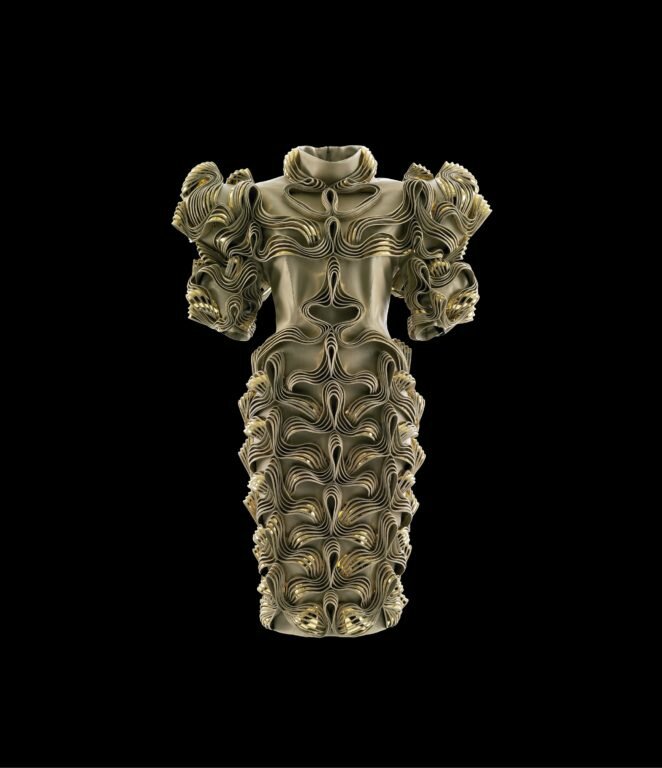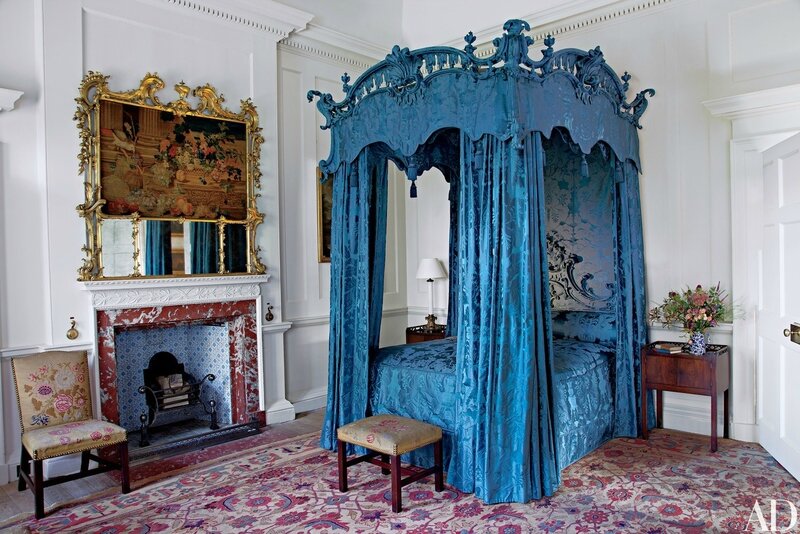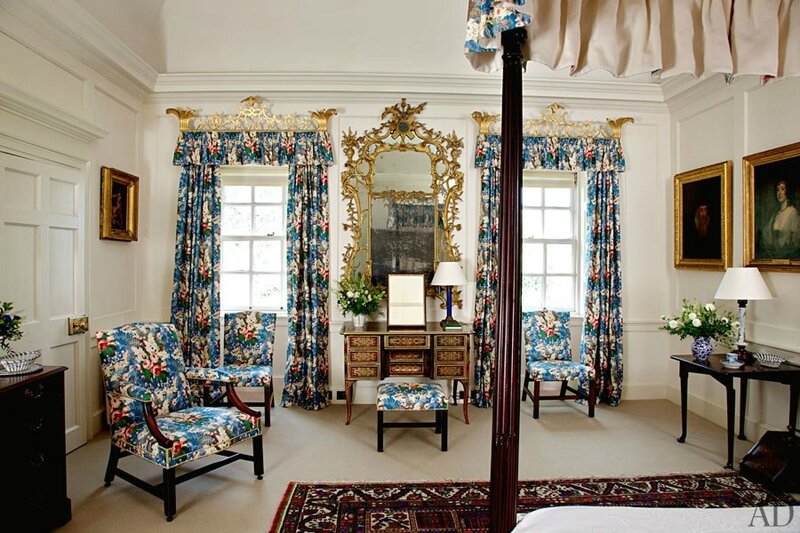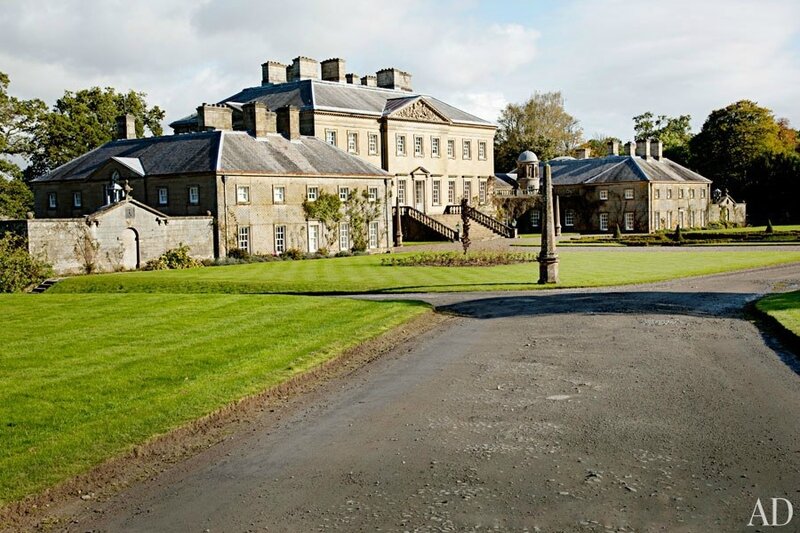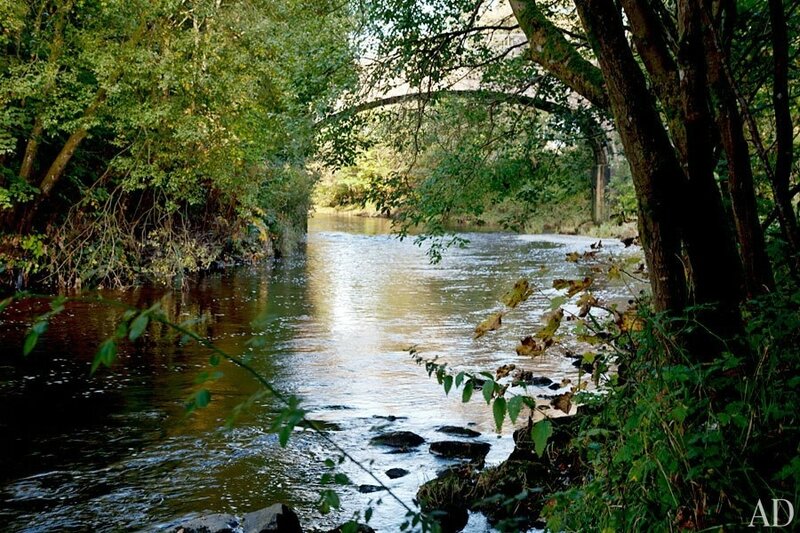![4848-002]()
Andrea della Robbia, Bust of a Young Boy, c. 1475, glazed terracotta, overall: 13 x 11 13/16 x 7 7/8 in. (33 x 30 x 20 cm), pedestal: 1 13/16 in. (4.6 cm), Museo Nazionale del Bargello, Firenze.
WASHINGTON, DC.- More than 500 years after their creation, Della Robbia terracotta sculptures endure as some of the most innovative and expressive examples of art from the Italian Renaissance. On view at the National Gallery of Art, Washington, West Building from February 5 through June 4, 2017, Della Robbia: Sculpting with Color in Renaissance Florence is the first major American exhibition dedicated to works by three generations of the Della Robbia family and their competitors. The exhibition travels to the Gallery, the only other venue, after premiering at the Museum of Fine Arts, Boston (MFA) from August 9 to December 4, 2016.
Some 40 examples illustrate the range of sculptural types produced by the workshop—Madonna and Child reliefs, architectural decoration, portraits, household statuettes, and large-scale figures in the round. Even today the ceramics retain their signature opaque whites, deep cerulean blues, and lively greens, purples, and yellows, due to the glazing technique invented by sculptor Luca della Robbia (1399/1400–1482). While drawn chiefly from American collections, the exhibition also includes six major loans from Italy, among them Luca's masterpiece, The Visitation (c. 1445). On loan from the church of San Giovanni Fuorcivitas in Pistoia, the work is traveling to the United States for the first time for the exhibition's two venues.
![4848-001]()
Luca della Robbia, Madonna and Child, c. 1441-1445, glazed terracotta, framed: 120 x 79.5 x 17 cm (47 1/4 x 31 5/16 x 6 11/16 in.), image: 63 x 50 x 14 cm (24 13/16 x 19 11/16 x 5 1/2 in.), Museo Nazionale del Bargello, Firenze.
"With the Museum of Fine Arts, Boston, the Gallery is proud to present the first exhibition in the United States devoted to the wonderful sculptures of the Della Robbia family, which stand the test of time as powerful examples of Renaissance creativity and refinement," said Earl A. Powell III, director, National Gallery of Art, Washington. "The sculptures selected also show the perception of American collectors who brought so many superb Della Robbia works to this country. We are grateful to the Altria Group and to the Antinori family for making the exhibition possible, and to Sally Engelhard Pingree and The Charles Engelhard Foundation, the Buffy and William Cafritz Family Foundation, and The Exhibition Circle for their generous support."
"Supporting and celebrating the arts has always been important to our family, and we're honored that the Della Robbia exhibition and the newly renovated Resurrection of Christ lunette featuring one of our ancestors and the family coat of arms will be showcased in the renowned National Gallery of Art," said Alessia Antinori, the 26th generation of the Tuscan winemaking family.
"Those who come to see Della Robbia: Sculpting with Color in Renaissance Florencewill be impressed by the dramatic use of bright colors and the sheer size of some of these Renaissance masterpieces," said Ted Baseler, President and CEO of Ste. Michelle Wine Estates. "We are very pleased to support this incredible exhibition in the nation's capital."
![4848-003]()
Giovanni della Robbia, Christ child and Young St John the Baptist, c. 1510, glazed terracotta, overall: 31.5 x 32.5 x 11 cm (12 3/8 x 12 13/16 x 4 5/16 in.), Museo Nazionale del Bargello, Firenze.
Exhibition Highlights
Born at the cusp of the 15th century to a family active in the textile industry, Luca della Robbia became a successful marble sculptor by the 1430s, famous for his reliefs of music-making children for a choir gallery in the Cathedral of Santa Maria del Fiore. Praised around 1435 by the art theorist Leone Battista Alberti as a leading contemporary Florentine artist alongside Donatello, Ghiberti, Masaccio, and Brunelleschi, Luca went on to secure his rank as one of the most important Florentine artists of the Renaissance by inventing a glazing technique—and with it an entirely new art form. The form uniquely combined durable terracotta (baked clay) with the brilliant colors of painting and the shine of vitreous glaze. With Luca's invention, the Della Robbia workshop flourished and produced sculptures for the secular and sacred, public and private spaces of Florence. Their recognizable ceramics could be found across the city and beyond, in courtyards, churches, hospitals, and the homes of a wide range of patrons, including Piero de' Medici.
Della Robbia: Sculpting with Color in Renaissance Florence begins by introducing three generations of the Della Robbia family through their works: Luca; his nephew Andrea (1435–1525), who trained with Luca and took over the workshop when Luca's health began to decline; and Andrea's son Giovanni (1469–1529/1530), who learned the technique from his father and carried on the family enterprise. The exhibition also includes sculptures by Giovanni's brothers Luca the Younger (1475–1548) and Girolamo (1488–1566), three of the five sons of Andrea (a father of 12) who carried on the family art form.
Under Luca's supervision, the workshop developed techniques and practices to help meet high demand. With plaster molds, they could easily replicate their most popular models while also varying the details by hand in the wet clay and, after a first firing, in the glazes. The exhibition features two pairs of reliefs probably made from the same molds, including examples of the most popular subject for domestic settings, the Madonna and Child. Virgin and Child with Lilies (1460/1470) from the MFA and Madonna and Child (c. 1475) from the Gallery's collection show clearly how alterations—the addition of angels, Christ's tighter grip on the lilies, details in higher or lower relief, different styles of painting with glazes in the grass—could individualize serial sculptures.
![4848-005]()
Luca della Robbia, Virgin and Child with Lilies, 1400 - 1482, glazed terracotta, overall: 48 x 37 cm (18 7/8 x 14 9/16 in.), Museum of Fine Arts, Boston. Gift of Quincy Adams Shaw through Qunicy Adams Shaw, Jr., and Mrs. Marian Shaw Haughton
![4848-009]()
Luca della Robbia, Madonna and Child, c. 1475, glazed terracotta, overall: 48.3 x 38.9 cm (19 x 15 5/16 in.), framed: 102.2 x 62.2 x 13.3 cm (40 1/4 x 24 1/2 x 5 1/4 in.), Widener Collection
Many commissions, such as The Visitation,were designed with a specific setting in mind. The quietly powerful sculptural group, a masterpiece of 15th-century art in any medium, was generously lent by the Church of San Giovanni Fuorcivitas, the Diocese, and the city of Pistoia for its first trip to the United States. The nearly life-size composition depicts the emotional moment from the Gospel of Luke when the pregnant Virgin Mary is welcomed by her elderly cousin Elizabeth, pregnant with St. John the Baptist. Formed fully in the round, the two figures were fired in four individual pieces that fit securely together. Following its time in Washington, the beloved work will return to Pistoia, designated as the Italian Capital of Culture in 2017.
![4848-004]()
Luca della Robbia, The Visitation, 1400 - 1482, glazed terracotta, overall: 151 x 148 x 60 cm (59 7/16 x 58 1/4 x 23 5/8 in.), Church of San Giovanni Fuorcivitas, Pistoia. Photograph: Scala/Art Resource, NY.
Andrea increased the production of serial sculpture and the shipment of Della Robbia works to clients beyond Florence. He developed Luca's techniques with figures of heightened elegance, giving particular attention to the details of hairstyles and costumes, and carried on with nature study especially in images of children. The resplendent garlands of fruit and flowers surrounding many of the works, introduced by Luca, were enriched and expanded by Andrea, as in the Roundel with Head of a Youth (c. 1470/1480, Detroit Institute of Arts) and Prudence (c. 1475, The Metropolitan Museum of Art). He made effective and expressive use of his uncle's color palette, as in the blue and violet shades that envelop his Mother of Sorrows (c. 1525, Saint Louis Art Museum). Yet in the 1490s, when Andrea became a follower of the reformist preacher Fra Girolamo Savonarola, he explored a new, more austere naturalism in devotional sculpture, with flesh areas of holy figures sometimes left unglazed to suggest their humble origins from earth.
![4848-024]()
Andrea della Robbia, Portrait Roundel, 1435 - 1525, glazed terracotta, overall: 55.88 x 55.88 x 16.51 cm (22 x 22 x 6 1/2 in.), Detroit Institute of Arts, Gift of Henry Ford Hospital personnel in memory of Edsel B. Ford. Photograph: Bridgeman Images.
![4848-011]()
Andrea della Robbia, Prudence, ca. 1475, glazed terracotta, overall: 164.5 cm (64 3/4 in.), weight: 1223 lb. (554.749 kg). Lent by The Metropolitan Museum of Art, Puchase, Joseph Pulitzer Bequest, 1921 © The Metropolitan Museum of Art. Image source: Art Resource, NY.
![4848-019]()
Andrea della Robbia, Mother of Sorrows, c. 1525, glazed terracotta, overall: 80.49 x 40.01 x 20.32 cm (31 11/16 x 15 3/4 x 8 in.), Saint Louis Art Museum, Museum Purchase.
Giovanni della Robbia, Andrea's son, continued to explore the naturalism pursued by his father. A highlight of the exhibition, Giovanni's monumental Resurrection of Christ (c. 1520/1525, Brooklyn Museum) is installed in the first room, atop the entrance to the West Garden Court to recall its previous home on a garden gate at the Antinori family villa outside Florence. The masterpiece depicts a life-size Antinori patron (probably Niccolò di Tommaso, 1454-1520) in prayer below the blessing right hand of Jesus, with the family coat of arms on the lower corners of the exuberant botanical frame. To prepare for its departure from Brooklyn for the first time since its donation in 1898, the more than 12-foot-wide lunette underwent a year-long conservation treatment supported by the current generation of the Antinori family, who also provided generous support for the exhibition.
![4848-017]()
Giovanni della Robbia, Resurrection of Christ, ca. 1520- 1525, glazed terracotta, overall: 156.2 x 349.3 x 29.2 cm (61 1/2 x 137 1/2 x 11 1/2 in.), Brooklyn Museum, Gift of A. Augustus Healy
Displayed among the Della Robbia works in the fourth and fifth rooms are sculptures by a rival firm—Benedetto Buglioni (1459/1460–1521) and his apprentice and distant relative, Santi Buglioni (1494–1576). The Buglioni workshop capitalized on the popularity of glazed ceramics and attempted, with uneven success, to create sculptures that extended the technique and material to their limits. Santi Buglioni's three five-foot-tall preaching saints—brought together from an American private collection, the Los Angeles County Museum of Art, and the Gallerie degli Uffizi—are impressive for their scale and charismatic presence, but proved difficult to fire, as indicated by the large cracks and peculiarities visible in the glazed surfaces.
![4848-036]()
Santi Buglioni, San Bernardino da Siena, 1494 - 1576, glazed terracotta, overall: 159.39 x 79.38 x 43.82 cm (62 3/4 x 31 1/4 x 17 1/4 in.), Private collection.
![3]()
Santi Buglioni, San Giovanni di Capistrano, 1494-1576, glazed terracotta, overall: 159.39 x 79.38 x 43.82 cm (62 3/4 x 31 1/4 x 17 1/4 in.), Los Angeles County Museum of Art, gift of The Ahmanson Foundation. Image: © 2015 Museum Associates/LACMA. Licensed by Art Resource, NY.
The Buglioni workshop was the last in Florence to use the Della Robbia technique. By the time of Giovanni's death, his siblings Luca the Younger and Girolamo had left Florence for France to focus on commissions for King Francis I, whose portrait by Girolamo from 1529 (on loan from The Metropolitan Museum of Art) is on view in the exhibition. As the 16th century progressed, marble and bronze became the predominant materials for sculptural innovation, and glazed terracotta fell out of favor. It was not until the middle of the 19th century that study and interest in Della Robbia work was revived—partly through English interest in craft techniques as well as in Renaissance art of the period before Michelangelo and Raphael. Della Robbia style and technique became part of popular culture, with 19th- and 20th-century firms continuing to replicate their models, and holiday decorations featuring garlands of fruit sometimes called "Della Robbia wreaths."
![4848-038]()
Girolamo della Robbia, Francois I (1494-1547), King of France, 1529, glazed terracotta, overall: 44.5 cm (17 1/2 in.). Lent by The Metropolitan Museum of Art, Gift of George Blumenthal, 1941.
Numerous American collectors, led by discerning Bostonians including Charles C. Perkins, Quincy Adams Shaw, and Isabella Stewart Gardner, brought Della Robbia works back from Italy. These now grace some of the 18 U.S. collections that lent to the show. Pioneering scholarship on the Della Robbia, still fundamental today, was carried out by an American, Allan Marquand (1853–1924), inspired by an Andrea della Robbia altarpiece owned by his father (now in The Metropolitan Museum of Art). Five works in the exhibition belong to the National Gallery of Art, given by founding donors Andrew W. Mellon and the Widener and Kress families. One from the Kress Collection, Andrea's Adoration of the Child (after 1477), belonged to the celebrated English arts writer John Ruskin in the late 19th century.
![4848-012]()
Andrea della Robbia, Madonna and Child with Cherubim, c. 1485, glazed terracotta, diameter: 54.7 cm (21 9/16 in.), framed: 95.25 x 88.27 x 14.61 cm (37 1/2 x 34 3/4 x 5 3/4 in.), Andrew W. Mellon Collection. © 2017 National Gallery of Art
![4848-054]()
Luca della Robbia, The Nativity, c. 1460, glazed terracotta, overall: 56.5 x 47.9 cm (22 1/4 x 18 7/8 in.), framed: 106.7 x 68.6 x 12.1 cm (42 x 27 x 4 3/4 in.), Samuel H. Kress Collection. © 2017 National Gallery of Art
![4848-013]()
Andrea della Robbia, The Adoration of the Child, after 1477, glazed terracotta, overall: 127.8 x 77.4 cm (50 5/16 x 30 1/2 in.), framed: 104.1 x 77.5 x 13.8 cm (41 x 30 1/2 x 5 7/16 in.), Samuel H. Kress Collection © 2017 National Gallery of Art
![4848-015]()
Giovanni della Robbia, Pietà, c. 1510/1520, glazed terracotta, overall: 72 x 44 x 32.7 cm (28 3/8 x 17 5/16 x 12 7/8 in.), Samuel H. Kress Collection © 2017 National Gallery of Art
Della Robbia Materials and Technique
It is often assumed that Luca used terracotta because it was inexpensive and easier to work with than marble. His invention, however, had its own qualities not offered by marble: color, of course, but also brilliant luminosity, legibility at a distance, and resistance to inclement weather. The Della Robbias' process, moreover, involved careful and laborious preparation of clay as well as extensive experimentation with the interaction of clay and glaze. Recent technical research by scholars and conservators at the MFA, the Gallery, the Brooklyn Museum, The Metropolitan Museum of Art, and the Walters Art Museum has revealed the sculptor's thorough understanding and manipulation of the materials.
The raw, calcium-rich clay was gathered from riverbeds, likely at a family-owned property along the Arno River. While Luca would have been familiar with clay as a material for preparatory models for works in bronze and marble, he selected it carefully for sculptures and developed an extensive refinement process to make it suitable for glazing. After an initial firing, the cooled ceramic body would be covered with glazes composed of ground glass and metal oxides with an alkali flux, then fired again to produce a hard, colorful, gleaming surface. The secrets involved the proportions of ingredients and the unique interactive relationship between the particular clay and glazes used. The recipe for the secret Della Robbia glazes included a greater ratio of lead and tin to other ingredients, which enhanced the final opacity and brilliance, particularly of the white figures that stood out against colored grounds.
Forerunners included not only the Renaissance glazed ceramics known as maiolica, but also the luxury art of enamel work on metal; Luca was reportedly trained as a goldsmith. The inventive glazing technique has kept the colors just as vibrant today.
![4848-005]()
Luca della Robbia, Madonna and Child, 1400 - 1482, glazed terracotta, overall: 39 3/8 x 20 1/16 x 15 3/4 in. (100 x 51 x 40 cm), Oratory of San Tomasso Aquino, Florence.
![4848-007]()
Luca della Robbia, Virgin and Child, 1400 - 1482, glazed terracotta, overall: 53.02 x 44.45 x 6.99 cm (20 7/8 x 17 1/2 x 2 3/4 in.), Museum of Fine Arts, Boston. Gift of Quincy Adams Shaw through Qunicy Adams Shaw, Jr., and Mrs. Marian Shaw Haughton.
![4848-008]()
Luca della Robbia, Virgin and Child in a niche, ca. 1460, glazed terracotta with gilt and painted details, overall: 47.3 x 38.7 x 8.9 cm (18 5/8 x 15 1/4 x 3 1/2 in.), framed: 93.03 82.55 cm (36 5/8 32 1/2 in.), Lent by The Metropolitan Museum of Art, Bequest of Susan Dwight Bliss, 1966.
![4848-014]()
Luca della Robbia, Madonna and Child, 1400 - 1482, glazed terracotta, overall: 73.66 x 51.12 x 11.43 cm (29 x 20 1/8 x 4 1/2 in.). Lent by the Toledo Museum of Art; Purchased with funds from the Libbey Endowment, Gift of Edward Drummond Libbey, 1938.123.
![4848-022]()
Workshop of Andrea della Robbia, Tabernacle, 1470s, glazed terracotta, overall: 78 x 48 cm (30 11/16 x 18 7/8 in.), Isabella Stewart Gardner Museum, Boston.
![4848-023]()
Andrea della Robbia, Roundel with the Bust of a Saint, 1435 - 1525, glazed terracotta, overall: 91.44 x 91.44 x 16.51 cm (36 x 36 x 6 1/2 in.), The Nelson-Atkins Museum of Art, Kansas City, Missouri (Purchase: William Rockhill Nelson Trust).
![18]()
Giovanni della Robbia, Judith, 1469 - 1530, glazed terracotta, height: 28 in. (71.12 cm), Museum of Fine Arts, Boston. Gift of Mrs. Albert J. Beveridge in memory of Delia Spencer Field.
![4848-026]()
Giovanni della Robbia, Dovizia, 1469 - 1530, glazed terracotta, overall: 69.22 x 37.47 x 20.96 cm (27 1/4 x 14 3/4 x 8 1/4 in.). Lent by The Minneapolis Institute of Art, The William Hood Dunworthy Fund.
![4848-027]()
![4848-028]()
Andrea della Robbia, Putto (Pair of Cherubs), 1435 - 1525, glazed terracotta, 18 1/8 x 14 7/8 x 2 7/8 inches, Private collection. Photographs: Bruce Schwarz.
![21]()
Benedetto Buglioni, Saint John the Baptist, 16th century, glazed terracotta, overall: 55.2 x 38.7 x 22.9 cm (21 3/4 x 15 1/4 x 9 in.). Lent by The Metroplitan Museum of Art, The Friedsam Collection, Bequest of Michael Friedsam, 1931.
![22]()
Santi Buglioni, Madonna and Child, 1494 - 1576, glazed terracotta, height: 41 9/16 in. (105.57 cm), The Walters Art Museum, Baltimore, Maryland, 27.218.
![4848-032]()
Luca della Robbia, Saint (Adoring Angel), 1400 - 1482, glazed terracotta, overall: 59.85 x 44.93 x 23.97 cm (23 9/16 x 17 11/16 x 9 7/16 in.), Private collection.
![23]()
Girolamo della Robbia, Bust of a Classical Hero or Emperor, 1488 - 1566, glazed terracotta, overall: 37.5 x 37.5 x 21 cm (14 3/4 x 14 3/4 x 8 1/4 in.), gross weight: 16.2 lb. (7.348 kg), The Cleveland Museum of Art, John L. Severance Fund, 2013.3.
![24]()
Girolamo della Robbia, Bust of a Man, 1488 - 1566, glazed terracotta, overall: 46.36 x 40.01 x 19.69 cm (18 1/4 x 15 3/4 x 7 3/4 in.), The J. Paul Getty Museum, Los Angeles.
![25]()
Luca della Robbia, Coat of Arms of the Franciscan Order, c. 1525, glazed terracotta, diameter: 75.6 cm (29 3/4 in.), depth: 11.4 cm (4 1/2 in.), North Carolina Museum of Art, Raleigh, Purchased with funds from the North Carolina State Art Society (Robert F. Phifer Bequest).
![26]()
Santi Buglioni, Roundel of the Coat of Arms of the Antonite Order, c. 1520-1535, glazed terracotta, diameter: 77.5 cm (30 1/2 in.), depth: 8.9 cm (3 1/2 in.), North Carolina Museum of Art, Raleigh, Purchased with funds from the North Carolina State Art Society (Robert F. Phifer Bequest).





























































